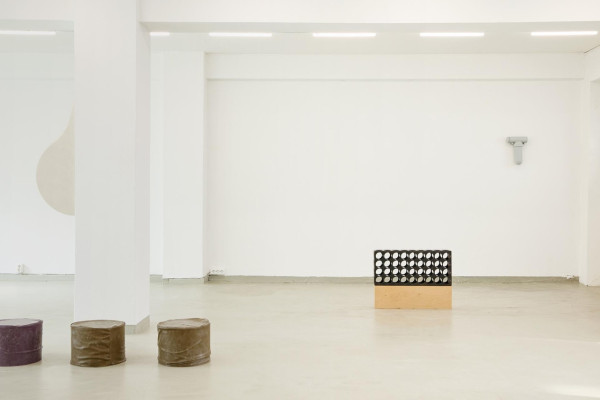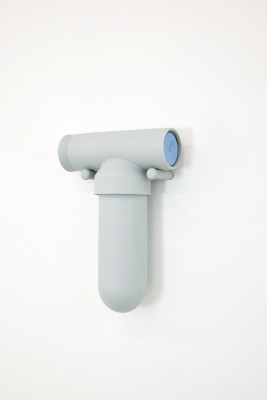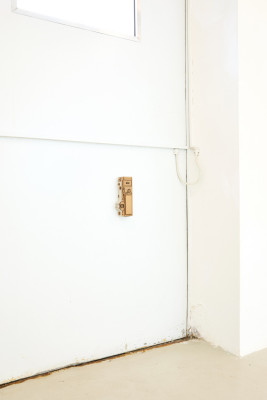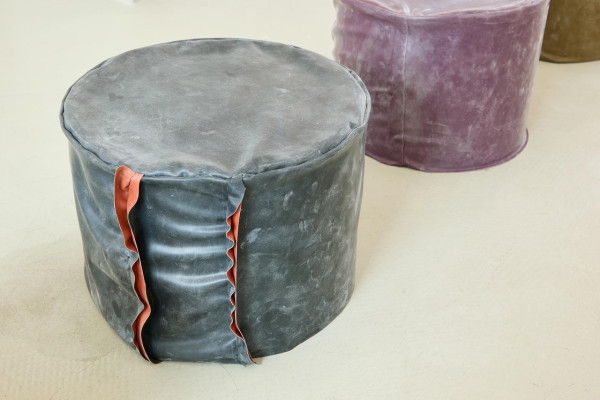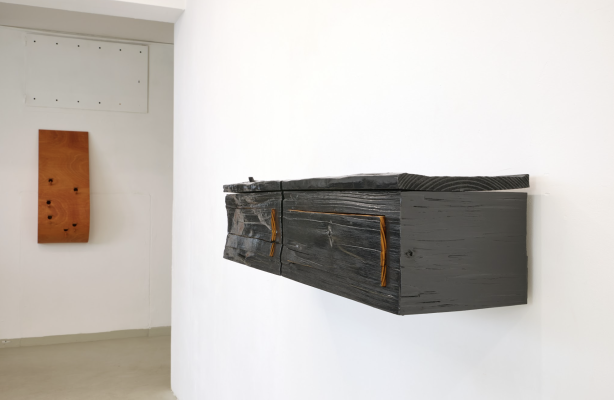About boxes
01-05-2025 / Sally Dalgaard
Containers are everywhere. Given that the storing and transporting of matter is a basic condition for human survival, this concept in a thousand shapes has followed us since the dawn of civilization; and probably before that. Historians have plausibly suggested that the container – for instance in the form of a carrier bag – was the first piece of technology we started to use. What is the point of picking berries if we can not bring them home to the cave?
When you start searching for them, containers inhabit myths and fantasies, fake news and fun facts all throughout history. Pandora‘s Box (which was in fact a mistranslated jar), containing despair and misfortune; Aladdin’s lamp, containing the magical Djinn (and three wishes); and the urban legend that the word skull originates from the proto-germanic word “skål” (cheers) because the vikings would drink wine from the skulls of their enemies. While the latter has been debunked, a significant feature of the container is revealed: it can be made of any material and take any form.
Most recently, a certain container is becoming still more prolific as an irreplaceable asset of the present-day supply chain: the cardboard box.
A cheap, foldable and lightweight vessel, circulated in the globalised logistics of late capitalism to an unprecedented extent. As traditional post services are in crisis and hand-written letters feel like a gimmick, you can now order toilet paper online and have it delivered to your door in a few hours: a robot will tell you per SMS that your package has arrived – *cardboard box emoji*.
So what is the status of the container?
To logistics, this discipline that informs not only war and trade, but also our domestic lives, the container is crucial – especially when it is standardized and optimized, designed for the effective distribution of goods. And as an image, the box is iconic: in unboxing-videos by excited influencers or in advertisements of pre-packaged gifts, the box is a strong symbol of material value in the industry of commodities.
But the box is also a dear friend when we want to protect memories (by storing a family photo-album), to show love (by giving someone their favorite cake) or to move in a hurry (because your landlord ended your contract before time). It can be full of personal affection or it can solve a collective problem. It is welcome when we know what we want to contain, but we need a container – or when we know that we want to contain something, but not yet what.
Why? Because the ontology of the box is not constituted by what is inside of it, but of what could be inside of it. Indeed, every box is a black box until it is opened – and if it is empty, it can be filled out: now, or in a future yet unknown. Its temporary destiny is decided in our hands as much as our destiny can be moved by the box: the help that it offers, the purposes it can serve, are often crucial – and it can be used again and again and again.
As such, boxes will continue to move in and out of our lives for as long as we have things to contain – and since ‘things’ can be anything, that will probably be for a while.
…
text for the exhibition
Schrödingers Katze, Kunstverein Gastgarten, Hamburg, April 26 – May 11. 2025, Saturdays and Sundays, 3 – 6pm
with works by
Rosario Aninat, Selmeci Kocka Jusko, Helli Müller, Yoora Park, Marie Pietsch and Adam Shiu-Yang Shaw
…
Preview Image: Yoora Park (Photo: Volker Renner)
